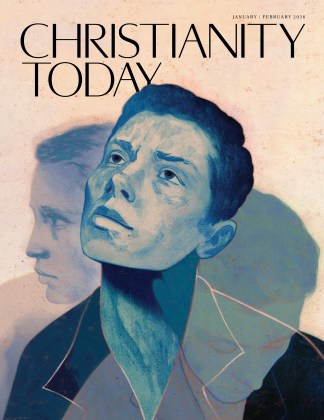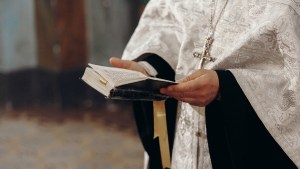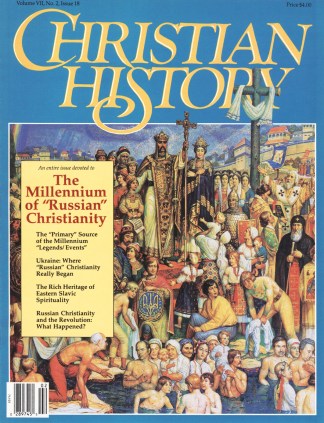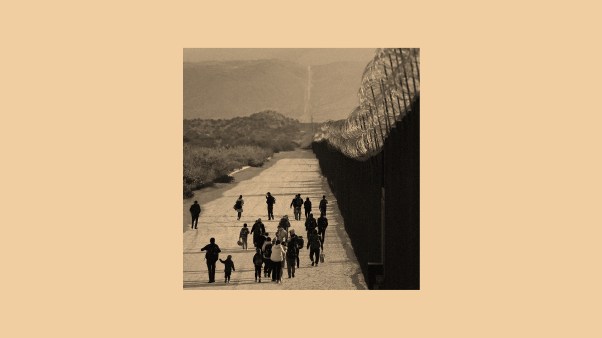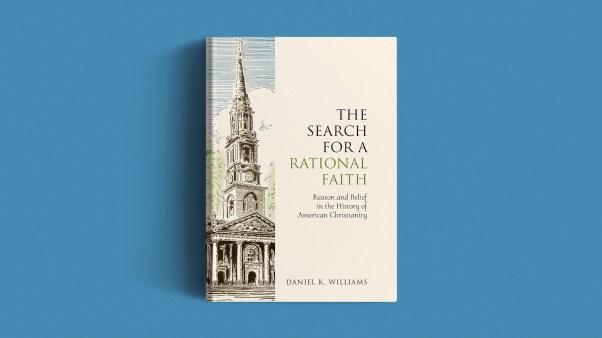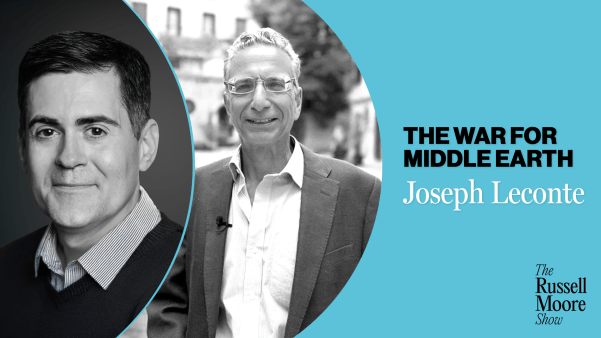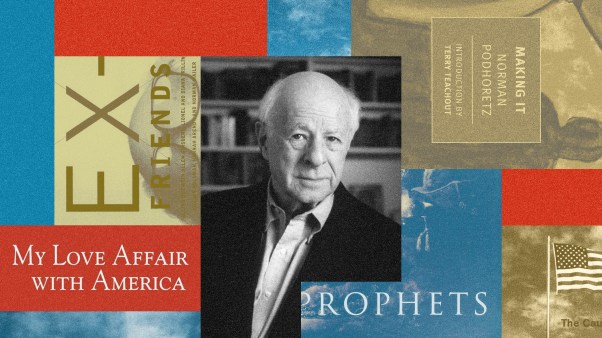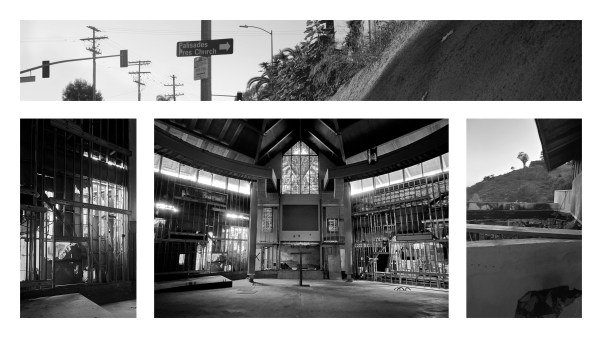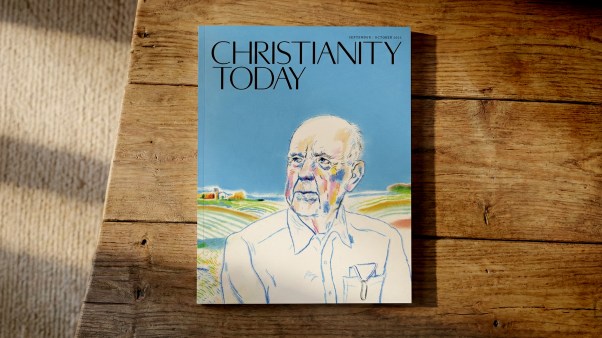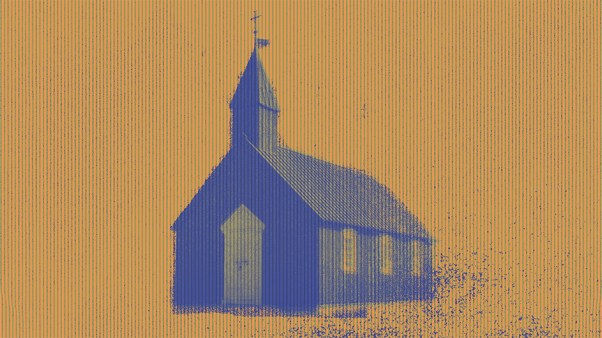In this series
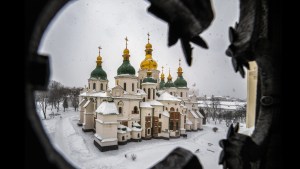
The Eastern Orthodox faith is at the center of many of the millennial celebrations, but to many of our readers—specially the Western Protestants—it may be a mysterious, unknown quantity. This article provides a Ukrainian Orthodox adherent’s introduction to his faith, including distinctives in worship and theology.
To most western-hemisphere Protestants, the Eastern Orthodox Church—despite so many media-hyped millennium celebrations revolving around it—is still very much a mysterious unknown, a phenomenon almost altogether outside their experience. So let us take a short comparison-and-contrast journey into what is the oldest continuous Christian tradition in the world.
At the outset we can discern at least one basic difference between Eastern Christianity and most of Western—their differing uses of the word orthodoxy. Whereas for the Western church the word has come to be almost exclusively associated with correct doctrine, for the Eastern church orthodoxy includes correct doctrine but is inextricably rooted in—and invariably grows from—correct worship. Thus to keep our journey properly oriented, we will make frequent reference to the primary compass-point of Orthodoxy-proper worship.
The God We Worship
The Orthodox, like most Roman Catholics and Protestants, worship the triune God of the Scriptures. Orthodox prayers are offered to God the Father, Jesus, God the Son, and to the Holy Spirit. During worship assemblies, the members’ frequent making of the sign of the cross “in the name of the Father, of the Son, and of the Holy Spirit” is an ongoing reminder of the Trinity.
The Orthodox see the doctrine of the Trinity as so significant that, each year in January, when Orthodox priests visit all the members’ homes to bless the residences and those living in them with holy water, the priests sing this hymn in a brief service at every home:
“When Thou, O Lord wast baptized in the Jordan, the worship of the Trinity was made manifest. For the voice of the Father bore witness unto Thee, calling Thee the beloved Son, and the Spirit, in the form of a dove, confirmed His word as sure and steadfast.”
The Orthodox have communal worship assemblies, just as do Catholics and Protestants. The church buildings where the Orthodox meet for these assemblies have three main parts: 1) the entrance; 2) the main open area where the worshippers gather; and 3) the altar, from whence the priest leads the worship. Looking around in an Orthodox church building, a Protestant might be struck by several features that differ from the average Protestant church building.
The Icons
One of the most obvious differences is the pervasive presence of icons, or religious “pictures.” Many Protestants might object at first that the presence of these “images” cannot be reconciled with the Old Testament’s admonitions against idolatry. But the Orthodox who produce and display these icons do not see them as idols—in fact, they would wholeheartedly agree with Protestants that idolatry has no place in Christianity.
The Orthodox do not believe that the icons are in any way substitutes for God. Rather, they believe that the icons’ evocative style and prescribed content better help human worshippers move toward the invisible, triune God who alone is worthy of adoration.
Icons are never painted (actually, written is the term the Orthodox prefer to use to describe the creation of icons) with the intention of them being realistic representations of actual persons; they are always painted stylistically, according to longstanding traditional guidelines, and always with the intention of drawing the worshipper’s attention to spiritual realities above and beyond the icons. The Orthodox refer to icons as “windows to heaven.”
But the Orthodox don’t advocate icons as just another good way of pointing us toward God; they actually see them as better ways of pointing us to God and expressing worship to God than the more strictly abstract styles of expression used in Protestantism. Humility, love and courage are meaningless words, they say, unless these virtues are incarnated in the lives of individuals.
And while they certainly acknowledge the world is fallen, they also affirm that the creation was good and is loved by God, that its fallenness does not mean there’s no place for it in worship, that in fact it can be transfigured and transformed into a means of glorifying God. As one saint wrote long ago:
“Through heaven and earth, through wood and stone, through all creation visible and invisible, I offer veneration to the Creator and Master and Maker of all things. For the creation does not venerate the Maker directly and by itself, but it is through me that the heavens declare the glory of God, through me the moon worships God, through me the stars glorify Him, through me the waters and showers of rain, the dews and all creation, venerate God and give Him glory.”
Thus Orthodoxy sees each believer as endowed with the task of praising God, and believes this should be done in concert with all of creation, including icons.
The Iconostasis and Mystery
Glancing further around an Orthodox church building, a Protestant might be struck by the decorated partition that completely separates (except for three doors in it) the altar from the area intended for the lay-worshippers. Called the iconostasis, this screen is frequently several tiers tall and is thoroughly covered with icons. The iconostasis symbolizes a second fundamental emphasis of Orthodox worship—the mystery at the heart of our adoration of God.
However, some outsiders might postulate that the iconostasis was intended to emphasize the distinctions between the clergy—those who are allowed behind the iconostasis—and the laity—those who are not. But actually, an emphasis on such distinctions is totally contrary to the spirit of Orthodoxy.
The point of the iconostasis is that God cannot be effectively encircled with dogma and definition. God goes beyond the limits of what humans can know, much less define and articulate. And so, on the other side of the iconostasis is the mystery of the indefinable God, a God beyond all our imaginings.
Similarly, the bread and wine, which are transfigured into the body and blood of Christ, are referred to as mysteries, things beyond human abilities of complete definition or understanding. The most appropriate reaction in the face of such mysteries is worship.
The iconostasis serves not only to underline the mystery of God, but also as a vehicle for education and an inspiration to meditation. Every iconostasis contains large icons of Christ and of Mary, as well as of several of the apostles and other saints. Other icons on the iconostasis depict various episodes from Christ’s life, often including His birth, His baptism, His passion, and His resurrection.
These icons now serve a didactic purpose—and have for hundreds of years—by bringing to members’ minds some of the major events dealt with in the Scriptures. This was particularly the case when many of the faithful were illiterate.
The Vestments and Liturgy
At the very beginning of the service, the priest comes out to spread incense around and above the believers, and here again we notice points of difference between Orthodoxy and Protestantism. During the drama of the Liturgy (the main Sunday service), Orthodox priests dress in vestments reminiscent of royalty in order to denote the royal presence of the Lord Jesus Christ at the gathering of the faithful community. This is especially emphasized when the priests face the worshippers.
However, most of the time the priest faces the altar right along with the rest of the faithful. The censing represents the invisible presence of the Holy Spirit, who directs our prayers and sanctifies us by leading us into the truth. It is the intention of the Orthodox that all these various elements of worship help the members participate in worship with the totality of their personalities, and not just intellectually. The Orthodox believe that beauty—whether expressed in the colors and styles of icons, or through the beautiful vestments of the priests, or in the aromatic scents of incense—calls all of the person’s components to prayer.
Let us now look briefly at the prayers themselves. First, one will notice that the texts of the liturgical service contain a synopsis of Christ’s life: from birth, through death, to the resurrection and beyond. One of the most important features of the main Sunday service is its Christ-centeredness. All the major events of Christ’s life are recalled through symbolic actions.
The Liturgy is also punctuated with litanies, sung alternately with doctrinal hymns. Litanies are a combination of two elements: 1) a dialogue between priest and choir, in which they raise our earthly concerns before God; and 2) the congregation singing the major refrains “Lord have mercy” and “Grant it, O Lord.” The hymns cover various doctrinal teachings, and always include some about Christ’s resurrection.
This is important because one of the major objectives of every Liturgy is to allow each believer to experience himself the power and joy afforded by the Lord’s resurrection. It should be noted that some of the hymns also give honor to Mary and certain saints, and it is to this difference between Orthodox and Protestants that we now turn.
The Place of Mary and Saints
The Orthodox include Mary and the deceased saints in their prayers, principally because we believe, along with many other Christians, that the glory of God is humanity redeemed and united to God, not humanity despised and downtrodden. God does not force anyone’s will, but waits patiently on us. Mary, therefore, had the opportunity to refuse God—to say “Not according to your will, God, but according to mine.”
No Orthodox Christian would challenge the idea that Christ and only Christ is our Savior. But there is no question that He included Mary’s cooperation in the salvation process, just as God will not save a person if that person does not wish to be saved.
When the Orthodox sing to Mary as the door of salvation, we are underlining the fact that Mary’s courage and love are vital components of the process through which we are saved. In this regard, and in contrast to the religious paintings of Roman Catholicism, Orthodox icons never depict Mary alone but always with Christ, emphasizing her subservience to Him but not denying the fact that she is His mother.
Regarding the deceased saints, here again the Orthodox have reasons for including them in the service that are, at least to them, theologically persuasive and profound. Orthodoxy adheres to the tenet that ever since the coming of Christ, the partition between time and eternity, between the living and the dead, has been broken.
There is a mysterious unity—referred to by the Orthodox as the “communion of saints”—that exists because of the love that all believers are to show for each other. And just as we show this love by praying for and asking for the prayers of living persons, so can we continue to do this with those who are dead.
Scripture and Tradition
This idea of community, of timeless interdependence, also exhibits itself in the important Orthodox concept of Holy Tradition. Yet because of how important this concept is to the Eastern Orthodox, they are sometimes accused of not being sufficiently biblical—of using tradition to supplant biblical teaching. However, this idea is wholly contrary to Orthodox teaching, which holds the Bible in the highest esteem, and sees it as the book of Christendom.
For the Orthodox, tradition is not a substitute for the Bible, but a necessary supplement to it. The Bible itself needs interpretation, and this interpretation occurs though the action of the Holy Spirit working through the entire believing community.
Such interpretation is never carried out individually, because this would open the door to individual error, fragmentation, and strife—as the fallenness of the world intrudes through the egocentricity that stealthily lurks in each of us. The church guards against this by looking to the believing community as a whole, as expressing itself particularly through the Seven Ecumenical Councils (the last of which was conducted in 787), for proper interpretation.
In other words, there is a repository of commonly accepted wisdom and teaching, the Holy Tradition, which addresses questions and problems that may not be directly and openly dealt with in the Bible. Of course, this teaching can never contradict Holy Scripture. Through this attention to Holy Tradition, Orthodoxy has largely avoided the fragmentation that has plagued Protestantism, while at the same time avoiding the autocratic arbitrariness of the Roman Catholic Church. In Orthodoxy, no single person (aside from Christ), has absolute and infallible authority. This authority is vested in the believing community; this is the heart of the concept of Holy Tradition.
The After-Life and Atonement
As for peoples’ fate in the after-life, the Orthodox Church considers no one, not even Judas Iscariot, as already being damned. To judge someone is not our task—it is God’s prerogative. Therefore, we do not say that any dead persons are already damned, nor do we suggest that any deceased believers—no matter how moral their behavior in life—are without need of further purification or cleansing. The Orthodox Church sees those who have already experienced physical death as being in a state of anticipation of their future fate, of either bliss or suffering. The Orthodox, in keeping with our reservations about over-defining, do not postulate the existence of purgatory along the lines of the Roman Catholic Church. There is no bargaining to be done with God to lessen the suffering of those who are trapped at death in a state of sin. Instead, what Orthodoxy encourages is the desire, in living persons, to be cleansed themselves so that they will be more pleasing to God.
Ultimately, the Orthodox believe that the final fate of each person will only be clearly decided at the final judgment, which will occur after the Second Coming of Christ.
The consideration of cleansing brings us to two related teachings—original sin and atonement. The Orthodox, with their Protestant and Catholic brothers and sisters, affirm that this world is fallen, and because of this we are born into an environment where it is easier for us to do evil rather than good. Though our solidarity with the rest of humanity, we are entangled in a web of deceit, of hatred and of sin. And through our personal contribution, this state of fallenness continues. Original sin points to our solidarity with the rest of humanity and does not, in a strict sense, imply guilt. Rather, it points to our involvement. The Incarnation, Jesus, is God’s supreme answer to the question of personal and original sin. Because through Christ, we are restored to communion with God. The Incarnation and death of Christ are not viewed by Orthodoxy as solely a settling of accounts nor a ransoming (although there are some aspects of this in Christ’s work). The essence of the Incarnation is love. Christ’s work is not just a reversal of sin and death, but also an inauguration of an essentially new stage in the history of man. We now, at last, see clearly what humanity is to become.
Dr. Alexander Melnyk is a professor of bio-chemistry at Vanier College in Montreal, Quebec, Canada, and is also currently a candidate for a master of divinity degree at St. Andrew's College, a Ukrainian Orthodox theological school attached to the University of Manitoba in Winnipeg.
Copyright © 1988 by the author or Christianity Today/Christian History magazine.Click here for reprint information on Christian History.
